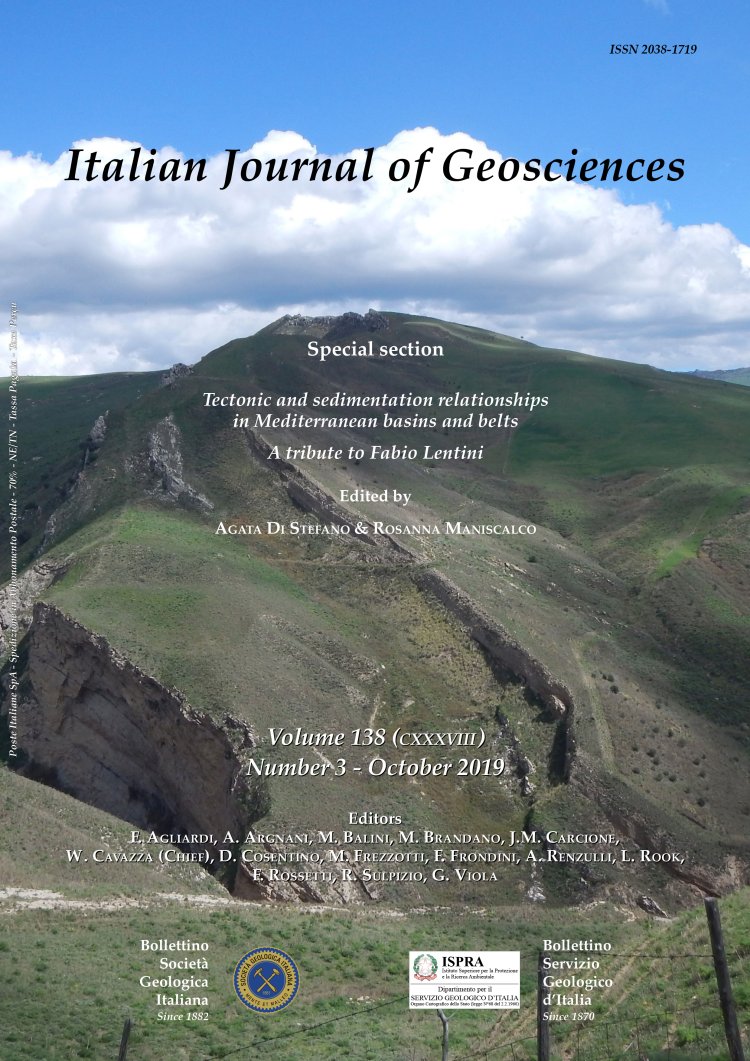
Tectonic control on Quaternary sedimentary processes and basin infill from the coastal area to the basin plain: examples from the Capo d'Orlando Basin (Southeastern Tyrrhenian Sea)
Fabiano Gamberi (1)
(1) Istituto di Scienze Marine, UOS Bologna, Consiglio Nazionale delle Ricerche, Via Gobetti 101, 40129 Bologna.
Corresponding author e-mail: fabiano.gamberi@bo.ismar.cnr.it
Volume: 138 (2019) f.3
Pages: 355-370
Abstract
Tectonic activity can affect every single segment of a sedimentary system and the various environments within a basin react in specific ways to tectonic forcing. However, the outcomes of tectonic activity on one environment have important consequences on the sedimentary processes in adjacent ones. In this paper, I evaluate the relationships between tectonic activity and sedimentary processes in several distinct environments, and in different times within the last sea- level cycle, in the submarine part of a single sedimentary system: the Capo d'Orlando Basin. The study area is located in the southeastern Tyrrhenian Sea along the northern Sicilian margin and is affected by active tectonics. A multibeam bathymetric coverage, chirp and regional sparker profiles are available over the study area. In the shelf, the Caronia Horst controls the thickness of the high stand systems tract and the character and the preservation potential of the coastal deposits of the transgressive systems tract. Coastal physiography, due to differential vertical movements, affects offshore current strength and pattern of sediment transport, causing the sand-mud line to move offshore. In the upper slope, tilting increases sediment instability and the accumulation of landslide deposits. Uplift, responsible for the local shallower depth of the shelf edge, favoured the connection between canyon heads and river mouths during the last sea-level low stand. More importantly, some of the canyon heads are still close to the coast and can receive sediment from rivers or offshore currents even during the present-day high stand. The Naso and the Calavà Channels have fault-controlled courses and an asymmetric profile, which controls the location of overbank flows, sediment failures and landslide deposition. In the basin plain, the continued activity of the major faults has created subtle topography and the turbidite lobes do not present a compensational stacking pattern but remain fixed in fault-controlled lows; differential compaction in the separate fault blocks also contribute to differences in turbidite thickness. Landslides are present at the base of the fault-controlled basin-bounding escarpments and punctuate the otherwise turbidite-dominated succession. The analysis of the Capo d'Orlando Basin illustrates the range of effects that tectonic structures have on sedimentary processes going from the continental shelf to the basin plain. More importantly, although in a qualitative way, this research shows how the tectonic influence on up-dip processes is also responsible for the nature of the depositional record in the deeper part of the basin.
Keywords
syn-sedimentary tectonics, transgressive deposits, high stand deposits, submarine channels, deep-sea fan, lobe deposits, turbidity current, submarine landslides.
Get Full Text